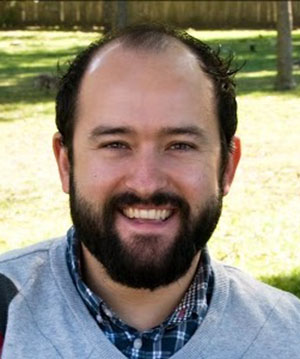Exploring the Jewish context of the Gospel of John
The short-term ATTR Mobility Grant gave me the unique opportunity to spend three weeks at the W.F. Albright Institute of Archaeological Research in Jerusalem working with top archaeologists on my materials. My PhD project explores the Jewish context of the Gospel of John, and attempts to understand how John relates to and functions as a particular form of ancient Judaism in the first century, long before the emergence of a distinct religion called “Christianity.”
A significant part of the project investigates John’s mention of “six stone water jars” (2:6) and stepped “pools” (5:2; 9:7) in light of the archaeology and use of stone vessels and ritual baths (miqva’ot) in Jewish purity practices during the early Roman period. Specifically, my goal is to understand how these artifacts functioned within ancient Jewish communities as materially embodied receptions of authoritative textual traditions that apparently prescribe their use, and how this reception history affects our interpretation of John.
Spending time with experts on the material
Since my PhD training so far has primarily been in textual studies, spending time with experts on the material aspect of my project provided it with precisely the kind of interdisciplinary expertise and feedback it needed.
In particular, I had the privilege of working with Dr. Yonatan Adler, who is a specialist not only in the archaeology of Jewish purity practices but also in the Jewish legal texts that correspond to these materials.
Material and methodological Insights
It is one thing to study texts and artifacts individually and separately from one another; it is quite another thing to touch, feel, and interpret such objects alongside the texts to which they relate. Because Dr. Adler granted me access to his archaeology lab and held several hours of discussion with me about methodology, I had the chance to bring both text and artifact together in a way that yielded highly significant interdisciplinary insights for my Research.
The ATTR grant also allowed me to refresh and expand my professional network exponentially.
Visiting the archaeological sites
Beyond my time with scholars and archaeologists at the Albright Institute, I worked several days with the archaeological team at Magdala (Galilee) from Universidad Anáhuac México Sur, led by Dr. Marcela Zapata Mezza. Dr. Zapata Mezza granted me access to Magdala’s stone vessel collections and allowed me to analyze the site’s exceptional ritual baths.
I also had the opportunity to visit other important sites for my research throughout Israel with several professors from the United States and Canada, and to connect with scholars from the Hebrew University of Jerusalem.
A family-friendly solution
The short-term ATTR Mobility Grant provided exactly the kind of support I needed. Since I have children, I could not be away from home very long.
This grant not only allowed me to have a short but highly productive research trip, but it also
helped me to lay a further foundation for international and interdisciplinary networking in my field.


